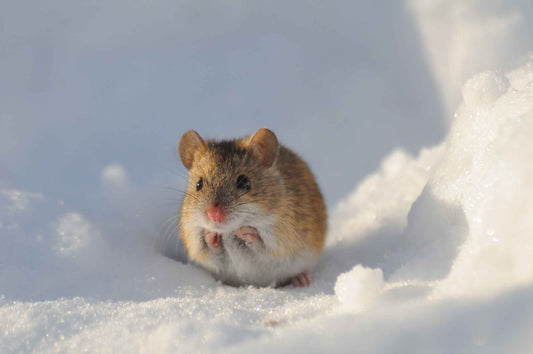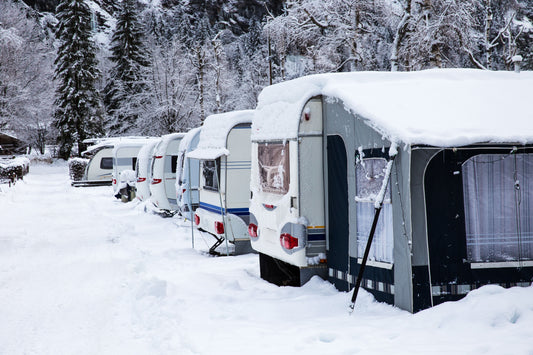
How to Get Mouse Smell Out of Car: A Step-by-Step Guide
Share
When you find a mouse in your car, the number one priority is always to get it out. And we’ve talked plenty about the how-tos of removing mice from your vehicle — but what about the horrible stench they leave behind?
These rodents are not what you would call respectful guests. Whether it’s from nesting materials, droppings, urine, or a decomposing body, the musky, sour odor of a mouse infestation can linger long after the mice are gone.
So, what can you do to refresh your car?
In this guide, we’ll break down everything you need to know on how to get that horrible mouse smell out of your car — with actionable steps, safety tips, and long-term prevention strategies.
Start by removing any visible droppings, nesting materials, or remains. Clean all affected areas with an enzyme-based odor eliminator. Let the car air out thoroughly, then use odor absorbers like baking soda, charcoal, or coffee grounds. Replace the cabin air filter if needed. For persistent smells, consider professional detailing or upholstery replacement.
Jump to Guide ↓
Safety First: What to Do Before You Start Cleaning
It is critically important that you take precautionary measures when cleaning up a rodent infestation. Even after they are gone, rodents can pass along dangerous viruses and diseases through their waste and debris, including the deadly hantavirus, leptospirosis, and salmonella.
Here’s how to protect yourself:
- Wear disposable rubber gloves
- Wear an N95 mask to avoid inhaling particles
- Ventilate the vehicle to the best of your ability by opening all windows and doors
- Never vacuum or sweep rodent debris — it can aerosolize particles

Step-by-Step Guide on How to Get Mouse Smell Out of a Car
Step 1: Locate the Source of the Smell
Even if the source of the smell appears obvious, a full search of the vehicle is a good idea (remember: where there is one mouse, there are likely two). Common areas include:
- Under seats and carpets
- In the trunk or rear storage compartments
- Inside glove boxes or center consoles
- In the engine bay
- Air vents (if smell intensifies when HVAC runs)
Look for:
- Small brown pellets (droppings)
- Damp or dark stains (urine)
- Shredded fabric, paper, or insulation (nests)
- A musty, sour, or ammonia-like odor
Use a flashlight to search deep crevices. If you find nothing visible, the odor may be trapped inside the HVAC system.
Step 2: Remove All Rodent Debris
Once the source of the odor is identified, take up proper safety precautions and begin clearing the debris:
- Spray any nests, droppings, or carcasses with disinfectant and let sit for at least 5 minutes.
- Use paper towels to scoop up debris (never use a vacuum).
- Dispose of all contaminated material in a sealed plastic bag.
Pro Tip: This is also a good time to remove floor mats, seat covers, and any stored items in the car to prepare for a full interior cleaning.

Step 3: Clean All Surfaces Thoroughly
While an enzymatic cleaner, designed to neutralize organic waste and urine odors, will be your best friend during this step of the process, make sure to approach each surface appropriately:
Hard Surfaces (dashboards, doors, consoles):
- Wipe down with a cloth soaked in enzymatic cleaner.
- Rinse with water and dry completely.
Soft Surfaces (fabric seats, carpet, trunk lining):
- Use a carpet cleaner or upholstery shampoo.
- For urine spots, saturate with enzymatic spray and blot — don’t scrub immediately.
- Allow to dry fully before assessing if a second round is needed.
Leather Surfaces:
- Use a leather-safe cleaner (many enzyme sprays are too harsh).
- Follow up with conditioner to avoid drying or cracking.
Step 4: Address HVAC Contamination
If your car smells worse when the AC or heat is running, chances are the HVAC system is contaminated. Rodents often nest near the cabin filter or inside the ducts.
Here’s what to do:
- Replace the cabin air filter — often located behind the glove box.
- Spray an HVAC deodorizing cleaner or disinfectant into exterior air intake vents while running the fan on full blast (recirculation off).
- Run the heat for 15 minutes with all windows open to flush the system.
If the smell persists or airflow is affected, consider professional HVAC cleaning — especially if nesting occurred deep inside the ducts.
Step 5: Eliminate Lingering Odors
If odors remain after a thorough clean of your vehicle, it is likely due to absorbed scents in the insulation and other soft materials. Do not resort to masking smells and sprays, as they will only temporarily hide the problem.
Instead, try the following:
- Activated charcoal bags (natural odor absorbers — leave them in the car for 24–72 hours)
- Baking soda (sprinkle over carpets and seats, let sit overnight, then vacuum)
- Odor-eliminating sprays with bacteria-neutralizing agents
- Ozone generator — use only with caution and as a last resort. Follow all manufacturer instructions and leave the car unoccupied during treatment.
How to Get Rid of Mice Urine Odor Specifically
Of all the smells left behind by a rodent infestation, urine is often the toughest to eliminate, especially when it has soaked deep into soft surfaces or foam.
Your best bet is to begin by using an enzyme-based cleaner.
- They break down uric acid crystals and proteins, neutralizing the smell rather than masking it.
- They’re safe for use on most auto fabrics and foam.
Areas to focus your attention:
- Seat cushions (especially seams and crevices)
- Floor mats and carpet padding
- Insulation beneath the trunk or dash
Reapply enzyme cleaner more than once for deep-set stains and allow surfaces to air dry completely.
What’s Worked for Other Drivers
Here are a few tips we’ve seen come up again and again from people who’ve dealt with mouse smells in their cars:
-
Coffee grounds under the seats. Some drivers swear by them as a natural deodorizer that works surprisingly fast.
-
Charcoal pouches. Often used in musty basements, these also work great in a closed vehicle to soak up lingering odor.
-
White vinegar bowls overnight. A classic trick to neutralize strong odors, especially in smaller cabins.
-
Foggers and ozone machines. Used carefully, these can be helpful as a last step — just make sure the source of the smell is gone first.
-
Cabin filter replacement. For many, this turned out to be the hidden culprit. Swapping it out made all the difference.
-
Sun + windows down. A few sunny days with the windows cracked can do more than most air fresheners ever will.
Tried something different that worked? Let us know — we’re always looking to add more real-world advice to this guide.
When to Call a Professional
The odor of a deep-rooted rodent infestation can often be too much to handle on your own. You may be in need of expert help if
- There’s a strong persistent odor you can’t trace.
- You suspect dead rodents inside ducts or under the dash.
- You or a family member is immunocompromised and cleanup poses health risks.
- Nesting occurred near sensitive electrical or engine components.
Auto detailers and pest cleanup services can access tight areas and use commercial-grade cleaners not available at retail.

How to Prevent Future Infestations
Once you’ve reclaimed your car, don’t let rodents move back in. Here’s how:
- Seal entry points — look for openings under the hood and seal with mesh or metal.
- Avoid parking near shrubs or tall grass.
- Keep food, trash, or dog treats out of the car.
- Install a rodent deterrent like the Box-Kat mouse barrier to block access from underneath.
If mice got in once, they can do it again — so take steps now to keep them out for good.
Frequently Asked Questions
How long does mouse smell last in a car?
That depends on the extent of the infestation and whether the source (droppings, nesting, or dead mice) has been fully removed. Mild cases may clear up in a day or two with proper ventilation and cleaning. Severe odors can linger for weeks or longer without deeper interior cleaning or filter replacement.
Can mouse urine smell make you sick?
Yes, prolonged exposure to rodent urine and droppings can be a health concern. Mouse urine can carry allergens and pathogens, including hantavirus in rare cases. That’s why it’s important to clean thoroughly and wear protection when dealing with an infestation.
Does vinegar get rid of mouse smell?
Vinegar can help neutralize mild odors and works best as a complementary deodorizer. Place small bowls of white vinegar inside the vehicle overnight after you’ve already cleaned the affected area.
What if the smell keeps coming back?
Recurring odor could mean a hidden source—often in the ventilation system, insulation, or upholstery. Check for trapped droppings or dead mice in harder-to-reach areas. If the source is gone but the smell remains, a professional ozone treatment or deep detail may be necessary.



